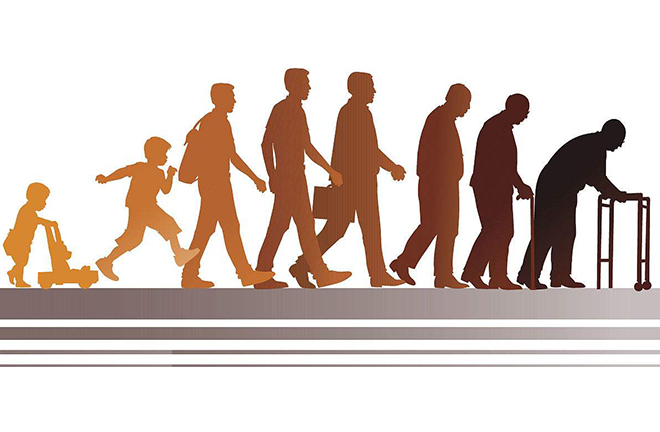Growing senior population calls for national strategy

The number of senior population in China has been growing today, which aggravates the aging demographics. Photo: FILE
Population is the basic and key variable affecting both the national economy's development and social development. A worldwide trend, population aging is inevitably linked to human society's development. Since becoming an aging society in 2000, China has faced a deeper degree of population aging. This is an important challenge that needs to be urgently addressed for the long-term balance of population growth.
In the proposals for formulating the 14th Five-Year Plan (2021-2025) for National Economic and Social Development and the Long-Range Objectives Through the Year 2035, it is clearly stated that the national strategy for addressing aging demographics should be actively implemented, signifying that the strategic implementation has become the main task of China's long-term demographic development.
The Chinese economy is transiting to a new stage of development, and in this period, population aging is an irreversible long-term trend. During the period of 2020-2035, the senior population in China will grow at a fast rate and on a large scale. However, the first two birth peaks since the founding of the People's Republic of China had a significant impact on today's aging demographics—the aged population has a relatively young demographic structure and a low dependency ratio.
While the Chinese economy transitions from a phase of high-speed growth to that of high-quality development, there are objective laws and inherent inevitabilities. In the phase of high-speed growth, economic development benefits from a demographic dividend which is attributed to a low dependency ratio, low labor costs and a large labor scale. As population aging continues to advance, greater pressure is posed on economy, causing the decline of the savings rate, consumption, labor supply and the return on investment (ROI). This will also cause the dependency ratio and labor costs to rise. As a result, the demographic dividend will eventually disappear, as will the once advantageous traditional factor cost, thus impacting the potential economic growth rate. Despite this, population aging can bring opportunities to economic development—developing a senior care industry, tapping into elderly human resources and releasing the consumption potential for the elderly people.
Upon entering the new phase of high-quality development (which is accompanied by an aging population), economic development must rely on improved factor efficiency and total factor productivity. Therefore, implementing a national strategy which actively addresses aging demographics is an important pathway to achieving a stable and sustainable economy.
The strategy will help build the new development pattern and boost larger domestic demand. China's current GDP per capita has exceeded 10,000 US dollars. Senior citizens who will come of age during the new stage of development are from the post-1960s and post-1970s generation. This group has sufficient pension reserves, a high consciousness of consumption and strong purchasing power. All of this will expedite the cultivation of a complete domestic demand system.
An additional benefit is that the strategy will help deepen the supply-side structural reform. To delay the legal retirement age in a progressive way is one of the most important ways to effectively increase the labor supply. From a holistic perspective, the national strategy for addressing aging demographics combines the building of the new development pattern with the deepening of supply-side structural reform.
Population aging has become a basic feature of Chinese society. It will inevitably bring about changes in social structures and social relations, thus affecting intergenerational harmony and social stability. Affected by economic and social development, China’s fertility rate continues to decline. The result of the Sixth National Census shows that the Chinese population is undergoing a major turning point—the demographic structure is witnessing an obvious population aging and a declining birthrate.
To actively deal with population aging, it is important to vigorously solve the problem of low fertility rate to ensure the population's normal replacement level (the level of fertility at which a population exactly replaces itself from one generation to the next so that the population remains the same from generation to generation). In addition, tackling aging demographics requires integration with social governance systems and modernized governance ability. Under this guide, systems that ensure economic and social development in line with population aging can be explored.
Chen Gong and Sun Jiling are from the Institute of Population Research at Peking University.
Edited by BAI LE
